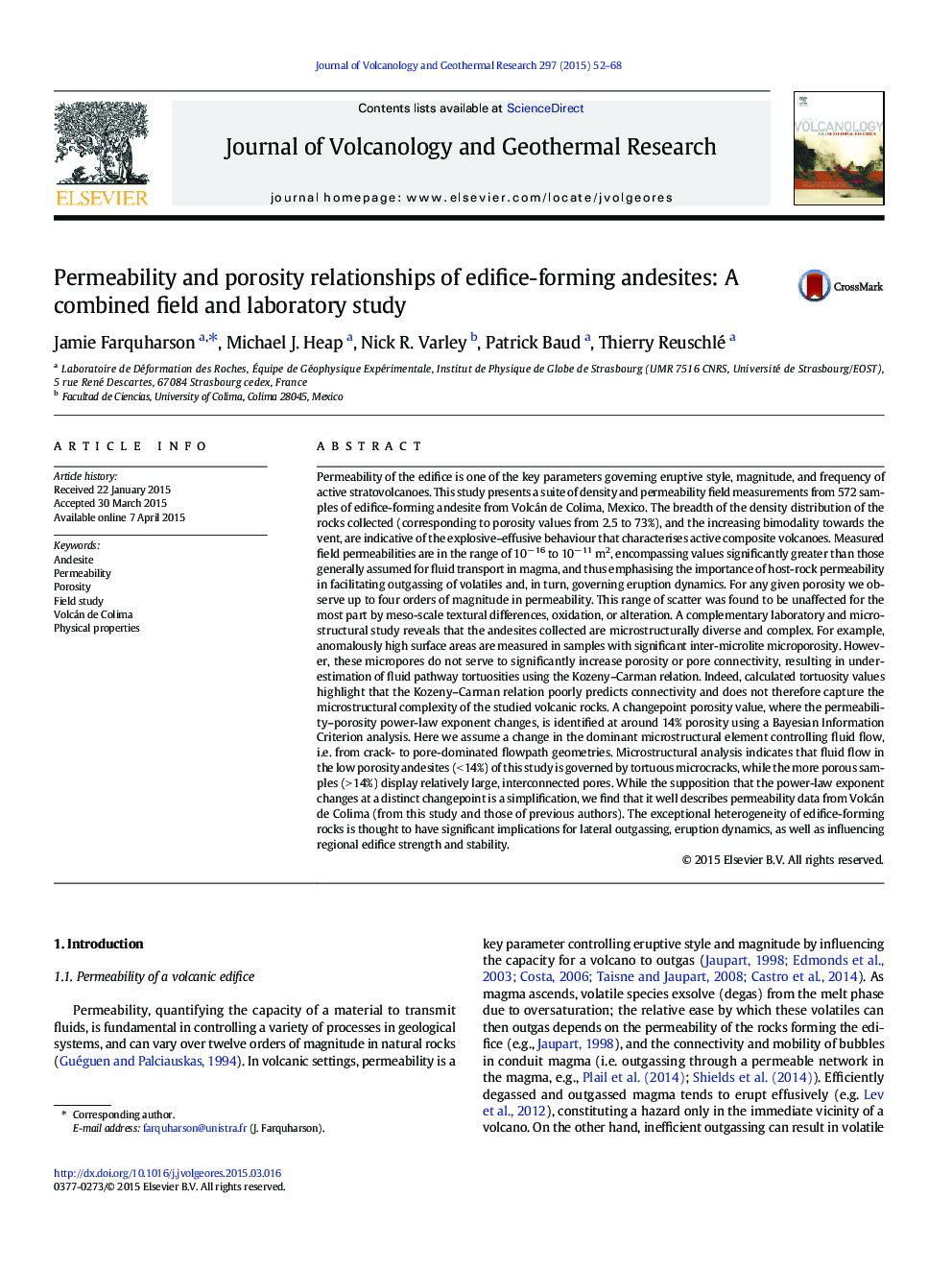| کد مقاله | کد نشریه | سال انتشار | مقاله انگلیسی | نسخه تمام متن |
|---|---|---|---|---|
| 4714450 | 1638325 | 2015 | 17 صفحه PDF | دانلود رایگان |
• We present complementary field and laboratory studies of andesitic rock properties.
• Porosities from 2.5 to 73% indicate a wide range of eruptive styles.
• Permeability k can vary up to four orders of magnitude for a given porosity.
• A threshold in porosity ~ 14% exists, where the microstructural controls of k change.
• This represents better connectivity and change from crack- to pore-dominated geometry.
Permeability of the edifice is one of the key parameters governing eruptive style, magnitude, and frequency of active stratovolcanoes. This study presents a suite of density and permeability field measurements from 572 samples of edifice-forming andesite from Volcán de Colima, Mexico. The breadth of the density distribution of the rocks collected (corresponding to porosity values from 2.5 to 73%), and the increasing bimodality towards the vent, are indicative of the explosive–effusive behaviour that characterises active composite volcanoes. Measured field permeabilities are in the range of 10− 16 to 10− 11 m2, encompassing values significantly greater than those generally assumed for fluid transport in magma, and thus emphasising the importance of host-rock permeability in facilitating outgassing of volatiles and, in turn, governing eruption dynamics. For any given porosity we observe up to four orders of magnitude in permeability. This range of scatter was found to be unaffected for the most part by meso-scale textural differences, oxidation, or alteration. A complementary laboratory and microstructural study reveals that the andesites collected are microstructurally diverse and complex. For example, anomalously high surface areas are measured in samples with significant inter-microlite microporosity. However, these micropores do not serve to significantly increase porosity or pore connectivity, resulting in under-estimation of fluid pathway tortuosities using the Kozeny–Carman relation. Indeed, calculated tortuosity values highlight that the Kozeny–Carman relation poorly predicts connectivity and does not therefore capture the microstructural complexity of the studied volcanic rocks. A changepoint porosity value, where the permeability–porosity power-law exponent changes, is identified at around 14% porosity using a Bayesian Information Criterion analysis. Here we assume a change in the dominant microstructural element controlling fluid flow, i.e. from crack- to pore-dominated flowpath geometries. Microstructural analysis indicates that fluid flow in the low porosity andesites (< 14%) of this study is governed by tortuous microcracks, while the more porous samples (> 14%) display relatively large, interconnected pores. While the supposition that the power-law exponent changes at a distinct changepoint is a simplification, we find that it well describes permeability data from Volcán de Colima (from this study and those of previous authors). The exceptional heterogeneity of edifice-forming rocks is thought to have significant implications for lateral outgassing, eruption dynamics, as well as influencing regional edifice strength and stability.
Journal: Journal of Volcanology and Geothermal Research - Volume 297, 15 May 2015, Pages 52–68
